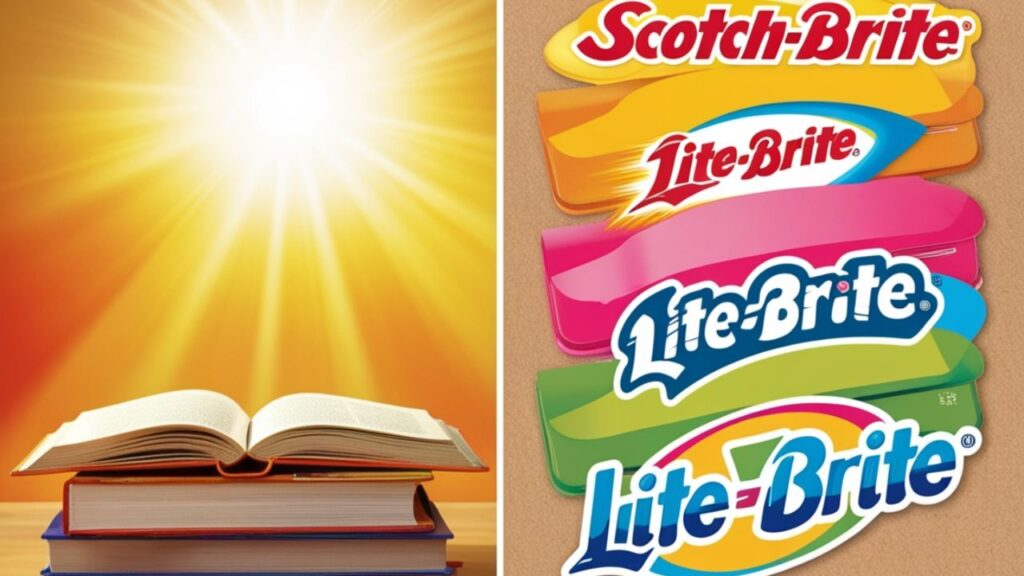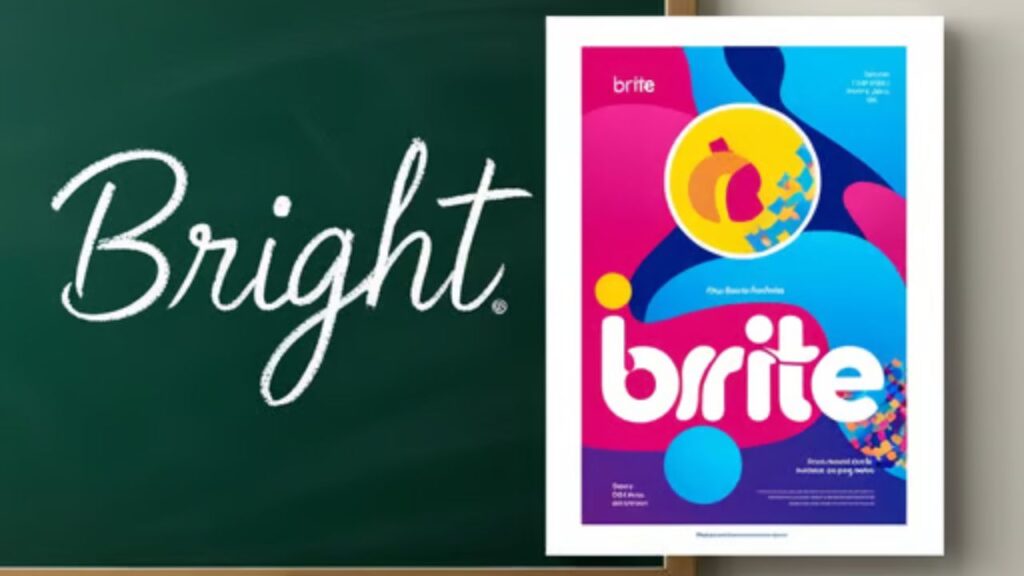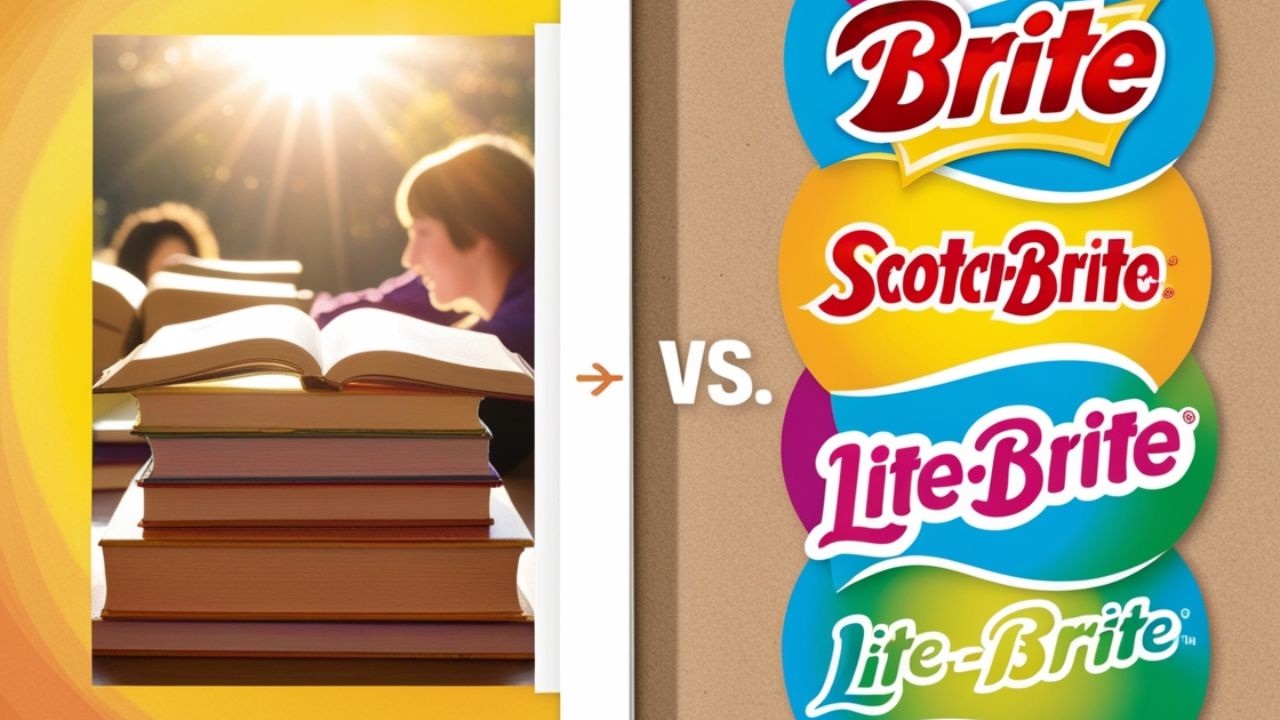The word bright is the correct spelling used in schools, books, and everyday English. It means light, smart, or happy. People often use it to describe sunshine, clever ideas, or a smiling face that shines with joy.
The spelling brite is not standard English. Companies use it in names to look modern and different. Examples include Scotch-Brite and Lite-Brite. This spelling makes products memorable, even though it does not appear in dictionaries.
Writers should choose bright for homework, letters, or official work. The spelling brite fits better in advertising or creative designs. Understanding when to use each spelling helps keep writing clear, correct, and professional for every reader.
The Etymology and Evolution of “Bright” and “Brite”
The Origin and Historical Usage of “Bright”
The word bright started in Old English and came from a term that meant shining or clear. Long ago, people used it for sunlight, stars, and other glowing things. Over time, it also described clever thinking and happy feelings.
Writers in history often chose bright when they spoke about wisdom, hope, or light. The word stayed strong through many centuries. It became part of everyday language, always showing clear meaning for ideas, emotions, and natural beauty.
Where “Brite” Comes From: Slang, Branding, and Simplified Spelling
The spelling brite appeared as a shorter form of the word bright. It was mainly used in product names and advertisements. This version looked fresh and simple, which made it popular in marketing and easy for customers to notice quickly.
Many famous brands used brite to sound creative and modern. Examples include toys, cleaning items, and dental care products. This spelling gave companies a unique style, helping their names stand out while still keeping the same sound as the original word.
Spelling and Pronunciation: Are “Brite” and “Bright” the Same?

Pronunciation
The pronunciation of bright and brite is exactly the same. Both sound like /braɪt/. This makes them homophones, which are words that share sound but differ in spelling. Readers can say them in one way without any confusion at all.
When people speak, the word bright is common in learning, while brite is often heard in brand names. Even though the letters change, the voice remains identical. This shared sound keeps speaking simple, even when the spellings look different.
Spelling
The standard spelling bright is taught in schools and appears in dictionaries. It is the accepted form for formal study, writing, and daily communication. Readers recognize it easily, and it always gives a clear meaning in sentences about light, ideas, or emotions.
The simplified form brite is used mostly in company names, packaging, and advertising. It does not follow standard grammar rules but helps brands look creative and modern. This spelling attracts attention, even though it is not part of formal English learning.
| Word | Pronunciation | Usage Type | Standard? |
| Bright | /braɪt/ | Adjective/Noun | Yes |
| Brite | /braɪt/ | Brand/Name | No |
What Does “Bright” Actually Mean?
“Bright” is a versatile word with multiple meanings, depending on the context:
Visual Brightness
- The morning sun filled the classroom with bright golden light, making everything look warm and cheerful.
- Her new dress had bright red colors that caught everyone’s attention during the school event.
- The stars looked bright in the night sky, shining clearly above the quiet town.
See also : Mashable Connections Hints: Solve NYT Connections Daily
Intellectual Brightness
- The bright student solved a tricky math problem faster than anyone else in the class.
- His bright idea helped the science project win first place at the school fair.
- She gave a bright answer during the quiz that impressed both classmates and the teacher.
Emotional or Cheerful Brightness
- Her bright smile made everyone in the room feel happy and relaxed.
- The child’s bright laughter spread joy during the family gathering.
- His bright mood lifted the spirits of friends after a long, tiring day.
Future or Opportunity Usage
- She has a bright future ahead because of her hard work and talent.
- The new job offer opened a bright opportunity for his career growth.
- Education gives children a bright chance to build successful and happy lives.
When and Why “Brite” Is Used (Non-Standard Contexts)

The spelling brite is often seen in product labels, toy names, and advertising slogans. Companies use it because it feels short, modern, and playful. This creative form makes the brand name easier to remember and gives it a friendly style.
Writers never use brite in schoolwork or official letters, but businesses prefer it for design and promotion. It adds a unique look that separates one product from another. This choice helps marketing teams build strong recognition among buyers.
- Branding Choice – Companies use brite in product names to look creative and modern.
- Marketing Appeal – The spelling feels short, catchy, and easy to remember for buyers.
- Youthful Style – Designers prefer brite to give products a playful and fresh identity.
Side-by-Side Comparison: Brite vs. Bright
| Feature | Bright (Correct) | Brite (Variant) |
| Spelling | Traditional, dictionary-approved | Simplified, non-standard |
| Use in Grammar | Adjective, sometimes noun | Proper noun or brand only |
| Formality Level | Suitable for formal contexts | Informal, creative, or promotional use |
| Found in Dictionary? | Yes | No (except as brand) |
| Examples | bright light, bright student | Lite-Brite, Brite Energy |
Common Confusions Between Brite and Bright
- Autocorrect Issues – Many devices change brite to bright, which can confuse writers when typing quickly.
- Brand Influence – Popular names like Scotch-Brite make people think brite is correct in normal writing.
- Casual Texting – In chats, some use brite as a short form, leading to mistakes in formal contexts.
Style Guide Recommendations for Writers
- Always use bright in schoolwork, formal letters, and professional documents.
- Use brite only when writing about a brand or product name.
- Keep spelling consistent throughout your work to avoid reader confusion.
Case Studies: Real World Uses of “Brite” vs. “Bright”
Case Study 1: Lite-Brite Toy Branding
The toy called Lite-Brite was first made in the 1960s. Children used small colored pegs and a light box to create glowing pictures. The special spelling gave the toy a modern name that was easy for kids to like.
Over the years, Lite-Brite became popular in many homes. Its bright lights and creative play made it memorable for families. The simple spelling choice helped the product stand out in stores and remain a classic toy for generations.
Case Study 2: BriteSmile Branding
The brand BriteSmile became known for teeth-whitening products and services. Its name used a creative spelling to sound fresh and modern. The choice helped people connect the brand with white, glowing smiles and easy-to-remember dental care solutions.
By using BriteSmile, the company built a strong identity in the beauty and health market. The spelling made the brand different from ordinary words, giving it a stylish look. Customers remembered the name easily, linking it with confidence and brightness.
Case Study 3: Scotch-Brite Cleaning Products
The brand Scotch-Brite is well known for making cleaning pads, sponges, and other household tools. The spelling gives the products a special identity that feels modern and simple. This style helps shoppers notice the name quickly when choosing items in stores.
Over time, Scotch-Brite grew into a trusted choice for families. Its products became linked with strong cleaning power and shiny surfaces. The creative spelling gave the brand personality, making it stand out while staying connected to the idea of brightness and clarity.
See also : Grammar Tips to Solve NYT Connections Puzzles Fast
Final Thoughts
The word bright should be chosen for study work, formal letters, and everyday writing. It is the correct spelling and gives clear meaning. The creative form brite fits better for brands or designs, not for school or official tasks.
Writers can avoid mistakes by remembering where each spelling belongs. Using bright keeps language correct and professional, while brite adds style in marketing. Knowing the difference helps readers understand quickly and makes every piece of writing strong and simple.
FAQs
What is the meaning of brite?
“Brite” is an informal or creative spelling of bright, often used in brand names, marketing, or casual writing to look modern or stylish.
How do Americans spell bright?
Americans spell it as bright, which is the standard and correct form used in schools, books, and professional writing across the United States.
What is another word for brite?
Another word for brite is bright, but synonyms include shining, radiant, glowing, or brilliant, depending on the sentence and meaning you want.
What does being bright mean?
Being bright means showing intelligence, quick thinking, or high energy. It can also describe something shining with light, color, or vivid clarity.

Join Bibcia on a journey to master English grammar. Discover easy lessons, writing tips, and practical examples designed to make learning grammar simple and effective.










